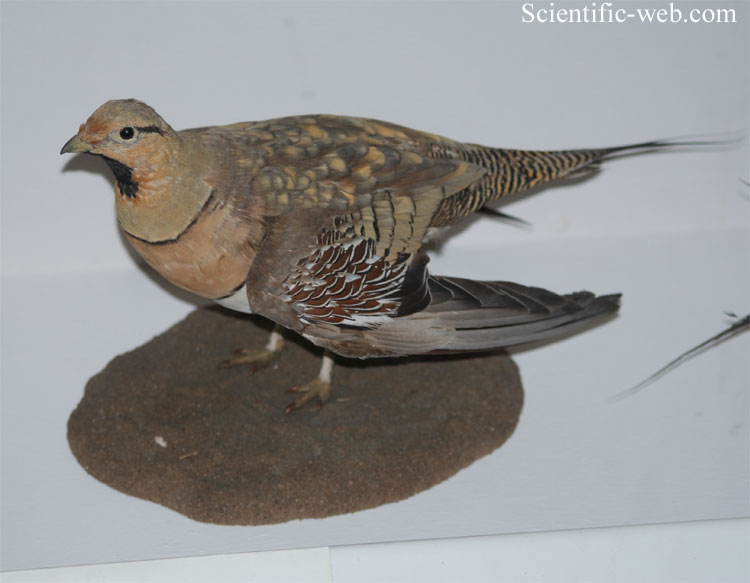Pterocles alchata, Photo: Michael Lahanas Cladus: Eukaryota Name Pterocles alchata (Linnaeus, 1766) Reference Systema Naturae ed.12 p.276 Vernacular names ------- The Pin-tailed Sandgrouse (Pterocles alchata) is a medium large bird in the sandgrouse family. The nominate race breeds in Iberia and southern France, and the eastern form P. a. caudacutus (Gmelin, 1774) is found in northwest Africa, and from southeast Turkey east to Kazakhstan. It is a partial migrant, with some Asian birds moving to the Middle East and northern Pakistan in winter. This gregarious species breeds on dry open treeless plains and similar habitats. Its nest is a ground scrape into which 2 or 3 creamy eggs with cryptic markings are laid. Both sexes incubate. The Pin-tailed Sandgrouse is 31–39 cm long. Its head and upperparts are yellowish-green. The underparts are white with a chestnut breast band separating the belly from the green neck. Sexes are similar, but the female is shorter tailed than the male. Males of the eastern race have duller underparts than the European birds, and the females have white, rather than yellow, wing coverts. This sandgrouse has a small, pigeon like head and neck, but sturdy compact body. It has long pointed wings, which are white underneath, a long tail and a fast direct flight. Flocks fly to watering holes at dawn. The call is a loud gatar-gatar. References * BirdLife International (2004). Pterocles alchata. 2006. IUCN Red List of Threatened Species. IUCN 2006. www.iucnredlist.org. Retrieved on 11 May 2006. Database entry includes justification for why this species is of least concern Source: Wikispecies, Wikipedia: All text is available under the terms of the GNU Free Documentation License |
|

